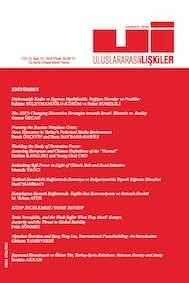
Uluslararası İlişkiler Dergisi
Yazarlar: Nader HABIBI
Konular:Sosyal
DOI:10.33458/uidergisi.525098
Anahtar Kelimeler:Levant,Syria,Turkey,Economic Cooperation,Trade,Civil War
Özet: For many decades domestic political instability, anti-globalization economic ideologies and geopolitical turmoil prevented the Levant countries from developing closer economic relations. In an unexpected turn of events the AKP government in Turkey initiated proactive diplomacy aimed at the promotion of closer economic ties with Levant countries and these efforts led to a significant increase in trade and investment between the Levant countries between 2002-2010. This progress came to an end with the Arab Spring uprisings in 2011. These uprisings evolved into a violent sectarian war in Syria and caused considerable damage to Turkey’s economic and diplomatic relations with Syria and Egypt. The level of sectarian violence has declined significantly in Syria and there is some potential that a political solution can be implemented. This outcome will have a positive effect on the region’s prospects for restarting the economic cooperation that was suspended in 2011. The short-term prospects for a multi-lateral economic agreement are not high but an expansion of bilateral economic relations is more likely among the countries that enjoy more political and economic stability.